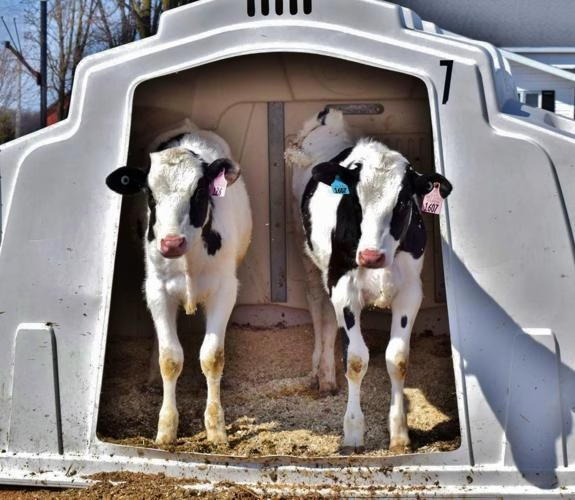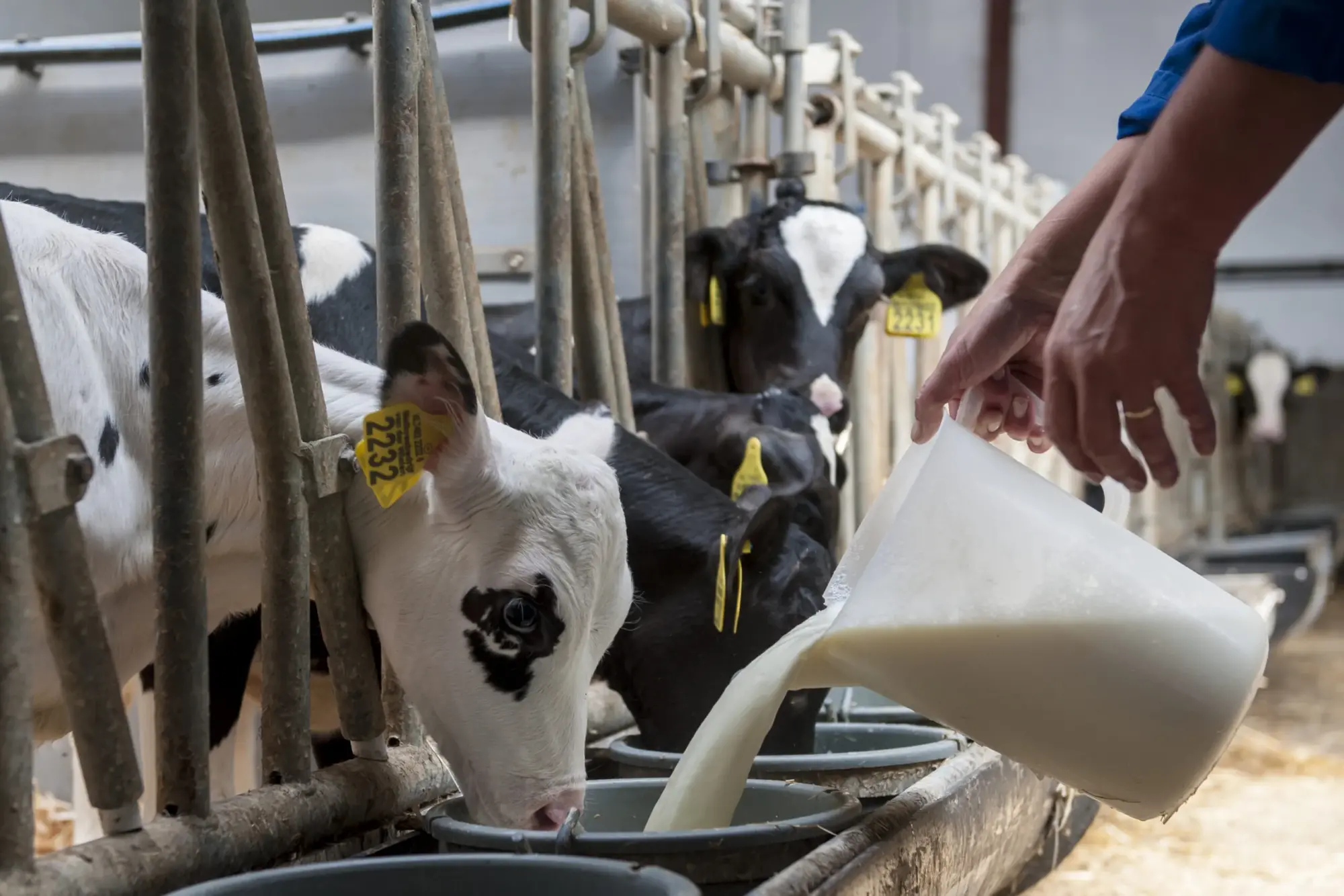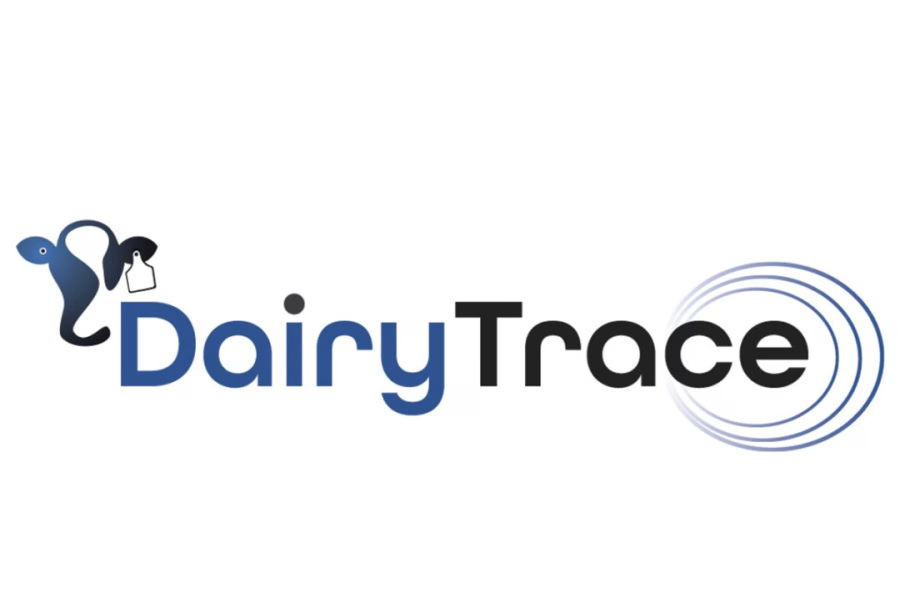Uncover the pros and cons of individual and group calf housing. Which one enhances calf health and growth? Discover what works best for your dairy farm.
Summary: Are you still debating whether to stick with individual calf hutches or transition to group housing? This article dives deep into the pros and cons of both methods and introduces pair calf housing as a potential compromise. Individual hutches offer benefits like disease control and flexibility but present cons like social isolation and exposure to extreme temperatures. On the other hand, group housing provides increased work efficiency and better socialization with automated milk-feeding systems minimizing labor. Pair housing offers a middle ground with significant social interaction and growth advantages. To make informed decisions, evaluate your current system, research new methods, and consider factors like ventilation and colostrum management. The right choice can promote animal welfare and farm productivity.
- Individual calf hutches help limit disease spread and offer management flexibility.
- Challenges of individual hutches include social isolation and temperature extremes.
- Group housing improves efficiency and calf socialization, with reduced labor due to automated systems.
- Pair housing combines the benefits of both methods, enhancing social interaction and growth.
- Key considerations: ventilation quality, colostrum management, and adaptability to new housing systems.
- Evaluate your current practices and stay informed to boost animal welfare and farm productivity.

Have you ever pondered over the best housing strategy for your calves? The choice between individual calf hutches and group housing is more than just a matter of preference; it can impact everything from calf health to farm productivity. In the dynamic world of dairy farming, finding the most suitable housing approach for your calves is more crucial than ever. Do you know which strategy could be a game-changer for your farm?
Why Individual Calf Housing Stands the Test of Time
Do you ever wonder why so many dairy producers continue to use individual calf housing? Despite various innovative ways, individual calf hutches remain the most popular technique. Let’s look at the historical context and present appeal of this technique.
Individual calf hutches a method that has stood the test of time since their inception in the 1960s, have been the preferred choice. They revolutionized cattle farming by significantly reducing disease transmission. Their simplicity and effectiveness have made them popular across the United States and Canada. For many years, hutches have been considered the gold standard in calf housing.
Consider the instance of Chris, a dairy farmer in Wisconsin. He has utilized individual hutches for more than 30 years. “I’ve tried various approaches,” he admits, “but I always return to hutches. They’re just more dependable in disease control.” With all these advantages and practical examples, it’s no surprise that individual calf hutches are popular among dairy producers. However, is this the most excellent solution for your farm? Only you can make the decision.
Pros of Individual Calf Housing
- Disease Control: Individual calf hutches reduce the transmission of illnesses such as diarrhea and pneumonia, which may be severe in group settings. Research shows that calves raised in individual housing had a decreased frequency of these disorders.
- Flexibility: Individual housing enables calves to be readily transported, and the system may be expanded as required. This flexibility is a significant advantage for many manufacturers that value the capacity to adjust fast. Hutches provide unparalleled flexibility, particularly for increasing operations.
- Reduced Suckling Between Calves: Individual housing prevents calves from indulging in unwanted habits like sucking on each other’s ears or navels, which may cause infections and other health problems. According to behavioral research, solitude reduces risk and improves health outcomes.
Cons of Individual Calf Housing
- Isolation: Calves reared in separate hutches experience social isolation, which affects their general well-being. Calves are naturally sociable creatures, and peer contact promotes natural behavior and social learning. Isolating calves might lead to poor social skills and difficulty adjusting to group situations later.
- Delayed Cognitive Development: Being reared in seclusion may impede cognitive development. When exposed to new challenges and circumstances in a social context, calves tend to adapt better and learn faster. Research shows calves raised in pairs have better cognitive performance and adaptability.
- Exposure to Extreme Temperatures: Individual hutches may expose calves to adverse weather conditions. These hutches may get very hot in the summer and uncomfortably chilly in the winter.
- Summer: Ventilation, such as laying bricks beneath hutches or building windows and air vents, may help reduce heat accumulation. Offering cover in outdoor places may help shield calves from direct sunlight.
- Winter: Hutches placed inside shelters can protect calves from severe winds and extreme cold. Proper bedding and insulation may also help keep the interior temperature steady.
Why Group Calf Housing is Gaining Momentum
More dairy farms are moving to group calf housing, and this trend shows no signs of stopping. So, why is shared housing becoming so popular?
Cattle group living has numerous advantages, including increased work efficiency, faster development, and better socialization. Feeding and maintaining calves in groups may greatly minimize labor time, particularly with automated milk-feeding systems that enable calves to feed just when necessary, providing timely nourishment.
Calves kept in groups often exhibit robust development patterns. They grow weight more effectively and flourish in a social setting, with data revealing that they gain more weight daily than individuals living alone. Early social contact prepares calves for life in the herd, lowering stress levels later in development. When calves interact with their peers from an early age, they acquire the social skills required for group life.
Pros of Group Calf Housing
- Labor Efficiency: Grouping calves may significantly minimize the work necessary to manage individual calves. Automated feeding systems help to simplify the procedure. Labor is decreased, and calves get milk when they are most in need of it.
- Better Socialization: Calves in group housing demonstrate better social behavior, preparing them for group living later in life. The most prominent effect is increased social engagement. The calves play together and stimulate one another.
- Automated Feeding Systems: These systems guarantee that calves get milk when required, reducing the need for human intervention and increasing efficiency. Thanks to automated milk-feeding devices that are now well-known and widely employed in the industry, feeding calves in groups has also become more accessible.
- Strong Growth and Health Metrics: Calves in groups frequently have higher average daily growth and weaning weights. According to a University of Wisconsin-Madison research, group-housed calves outgrew individually-housed calves by a wide margin.
Cons of Group Calf Housing
- Increased Disease Risk: When one calf becomes unwell, the illness swiftly spreads to others. This is a significant problem in group housing environments when contact is unavoidable.
- Ventilation Challenges: Ensuring sufficient air quality is critical since poor ventilation may quickly spread respiratory problems. Calves lack the body heat to encourage adequate airflow, resulting in a stagnant environment prone to illness.
- Temperature Control Issues: Without sufficient ventilation, stable temperatures are impossible to maintain, which has a severe influence on calf health, particularly during extreme weather conditions.
However, there are practical solutions to mitigate these issues:
- Positive Pressure Tubes: Positive pressure ventilation systems may provide fresh air into the house while preventing drafts. Fans attached to tubes offer a continual flow of clean air, which improves air quality.
- Multiple Small Buildings: Housing calves in numerous smaller, narrower buildings improves disease control. This method encourages an all-in/all-out management attitude, making it more straightforward to control breakouts and maintain proper ventilation.
Pair Housing: The Perfect Balance Between Individual Hutches and Group Pens
Pair housing is a practical compromise between individual calf hutches and group pens. This strategy has significant advantages over completely isolated or group-based systems. Farmers may encourage positive social contact in calves early on by placing them in pairs, which aids their cognitive and emotional development. This strategy enables the calves to interact with one another, which is vital for their well-being and social development.
Furthermore, findings show that calves housed in pairs had a higher average daily growth and weaning weight than their individually housed counterparts. This form of housing helps calves to consume more and gain weight more efficiently, better preparing them for the subsequent phases of development. Pairing calves may integrate effortlessly into current systems without requiring significant resource changes, making it a viable option for farmers.
Despite its benefits, pair dwelling has yet to reach widespread appeal. Producers may need to be made aware of the advantages of encouraging social behaviors or may still be concerned about calves suckling from one another despite evidence showing this is a minor problem when nutritional demands are addressed sufficiently. Pair housing as a feasible strategy might bridge the gap between the rigorous separation of individual housing and the complete management needs of group housing, resulting in a realistic and balanced approach to calf raising.
Let’s Talk Dollars and Cents: How Does Each Housing Method Stack Up Economically?
Let’s talk dollars and cents. How does each housing method stack up economically?
Initial Setup Costs
- Individual Housing: Individual hutches often need more materials and land area, resulting in greater starting expenses. An essential calf hutch may cost between $250 and $500.
- Group Housing: Although the initial investment in infrastructure, such as positive pressure tubes and automated feeds, may be significant, group housing systems benefit from economies of scale. A barn for group living may cost $1,000 to $3,000 per calf area. Still, it may accommodate many calves under one roof.
- Pair Housing: Pair housing falls halfway in the middle, splitting expenditures between individual and group settings. The initial cost comprises customized pens or dual-purpose hutches priced between $400 and $700.
Ongoing Maintenance
- Individual Housing: Maintenance expenditures here might quickly pile up. Each hutch must be cleaned and sanitized regularly, and the bedding should be replaced often. Individual feeding and care are labor-intensive, which might result in considerable labor expenditures.
- Group Housing: Maintenance expenditures are often cheaper per calf. Automated feeding systems decrease labor, while centralized cleaning systems improve sanitation efficiency. However, modern ventilation systems may involve continuing running costs.
- Pair Housing: Maintenance is often manageable. While it requires customized care, similar to hutches, having just two calves per unit allows for more efficient feeding and cleaning than individual setups.
Potential Financial Benefits and Drawbacks
- Individual Housing: The primary economic advantage is illness control, which saves major veterinary expenditures. However, excessive labor and maintenance costs might reduce profit margins.
- Group Housing: Group housing provides significant financial advantages, including lower labor costs and the possibility for higher growth rates owing to improved socialization. However, the potential of disease transmission might result in significant losses if not controlled appropriately.
- Pair Housing: This strategy creates a balance by lowering labor while promoting improved calf growth and social development. While not as cost-effective as group housing, it may still provide a good return on investment by boosting overall calf health and growth rates.
The Verdict: Which Calf Housing Method Wins?
| Housing Method | Pros | Cons | Economics |
|---|---|---|---|
| Individual Calf Housing | Good disease controlFlexibility in movementNo suckling between calves | Isolation delays cognitive developmentFeeding at specific timesExposure to extreme temperatures | Low initial setup costModerate ongoing maintenancePotential for lower vet bills due to reasonable disease control |
| Group Calf Housing | Labor efficiencyStrong growth and socializationAutomated feeding systems | Higher risk of diseaseRequires good ventilationMore complex management | High initial setup costLower labor costsPotential for higher health costs |
| Pair Housing | Better social interactionIncreased daily gainImproved weaning weight | Risk of sucklingNot as popularRequires proper management | Moderate initial setup costImproved health outcomesPotential for slightly increased feed costs |
Harnessing Technology to Revolutionize Calf Housing: A Game Changer for Dairy Farmers
Technological improvements have considerably influenced calf housing in recent years, providing remedies to some of the conventional disadvantages of solo and group housing approaches. Let’s look at some of these technologies and how they may help your business.
Automated Feeding Systems
- Precision and Consistency: Automated milk feeders guarantee that calves get accurate quantities of milk regularly, lowering the danger of malnutrition or overfeeding. This is particularly useful in group living, where tracking individual consumption might be problematic.
- Labor Efficiency: Automating the feeding process may save farmers substantial time and effort, enabling them to concentrate on other vital activities. This may be a game changer for both individual and group living situations.
- Health Monitoring: Many automatic feeders have integrated health monitoring systems that follow the calf’s eating habits and inform farmers of any discrepancies that might suggest a health problem. Early diagnosis allows for quick treatment, minimizing illness transmission in group situations.
Advanced Ventilation Solutions
- Positive Pressure Ventilation: Positive pressure tube systems may bring fresh air into the dwelling area without causing drafts. This technique guarantees that air is circulated effectively, eliminating impurities and lowering the danger of respiratory disorders, which is critical in both individual hutches and group pens.
- Climate Control: Advanced ventilation systems may be used with climate control technology to maintain ideal temperatures inside housing units. This is especially beneficial for managing high temperatures, typical in individual hutches exposed to the outside.
- Air Quality Management: These devices can continually check air quality, ensuring that dangerous gasses like ammonia are preserved at acceptable levels, benefiting the calves’ general health and development rates.
Integrating these technology innovations into your calf housing systems may result in a more efficient, healthier, and productive environment for your livestock. Whether you choose individual hutches, group pens, or a mix, these technologies provide significant advantages that may improve your operations and calf care.
Ready to Make the Switch? Here’s How to Transition Smoothly to a New Calf Housing System
- Evaluate Your Current System: Carefully analyze your living arrangements before adjusting. Identify your talents and shortcomings. Are sickness rates greater than you would prefer? Is labor efficiency a concern? Create a list of what works and what does not.
- Research the New Method: Obtain extensive information regarding the new housing technique you’re considering. Watch webinars, read case studies, and talk to other farmers. The Dairyland Initiative at the University of Wisconsin-Madison provides suitable materials.
- Plan the Layout: Consider how you will arrange pens to maximize airflow if transitioning from individual hutches to group living. Also, consider feeding stations, a water supply, and space available for each calf.
- Start Small: Initially, test the new procedure on a smaller number of calves. This allows you to discover and address any abnormalities without jeopardizing the health of your whole herd.
- Upgrade Your Ventilation System: Ensuring enough ventilation can prevent illness transmission in group situations. Positive pressure ventilation systems are an affordable solution.
- Staff Training: Educate your staff about the new system. Proper handling, feeding regimens, and disease monitoring must be revised to accommodate the new housing type.
- Monitor Health Closely: Transitional phases are crucial. Watch calves for any symptoms of stress or disease and set up a thorough health monitoring system.
- Adjust Feeding Strategies: Automated methods are often used for group feeding. You may need to purchase or update feeders to ensure optimum milk delivery.
- Keep Records: Link calf growth rates to health incidents. These statistics will help you understand the implications of the new housing system and make educated choices.
- Anticipate Challenges: Expect early hitches, such as more labor during the changeover or higher upfront expenditures for new equipment. Preparing for these difficulties may help to lessen their effect.
- Solicit Feedback: Regularly solicit opinions from your employees. They are on the front lines and may give crucial feedback on what works and needs to be changed.
Switching housing techniques may be difficult, but proper planning and progressive stages can make it easier and more successful.
FAQs: Navigating Calf Housing Choices
- What are the main benefits of individual calf housing?
Individual calf housing is ideal for disease management and individual feeding. It restricts calf-to-calf contact, decreasing disease transmission, and enables careful monitoring and control of each calf’s food and health. - Are there any significant drawbacks to individual calf housing?
Yes, separate housing often causes delayed cognitive development and socialization concerns. Calves alone may struggle to adjust to new situations and experience stress during weaning and group integration. - How does group calf housing benefit calves?
Group living encourages social connection and natural behavior, which may increase development rates. Because of greater exposure to mild diseases, calves acquire social signals and develop a stronger immune system. - What are the risks associated with group calf housing?
Disease propagation is a significant worry in communal living. Proper ventilation and vigilant health monitoring are essential for preventing epidemics of respiratory infections and other disorders. - Is pair housing a viable compromise between individual and group housing?
Absolutely. Pair housing provides the advantages of social connection while lowering illness risk compared to bigger groupings. Calves reared in pairs often exhibit increased development rates and social tendencies while avoiding the high illness risk of bigger groupings. - How do initial setup costs and ongoing maintenance compare across these housing methods?
Individual and pair housing have cheaper initial setup costs than group housing since the infrastructure is simpler. However, continuing upkeep might vary, with group living potentially reducing labor via automated feeding systems but incurring greater healthcare expenditures. - Can automated feeding systems work well with all housing methods?
Automated feeding systems may be tailored to solo, couple, and group habitation. These systems serve to maintain constant feeding and decrease labor requirements. Still, they need regular maintenance and monitoring of calf health. - What should I consider when transitioning to a new calf housing system?
Consider your herd’s requirements, the architecture and setting of your facilities, and the resources available to teach employees. Gradual transitions and trial runs guarantee a seamless transition while reducing stress for calves and employees.
The Bottom Line
The issue of individual vs. group calf housing is multifaceted, combining tradition and innovation. Individual housing boasts a long history of disease control, while group living promotes efficiency and social connections. Pair housing strikes a balance, offering social benefits without overwhelming calves. Regardless of the chosen method, ventilation, colostrum management, and cleanliness must be prioritized. Ultimately, your decision should align with your farm’s needs, aiming to enhance calf health, growth, and operational efficiency. Consider which method, or combination, will best promote animal welfare and farm prosperity.














